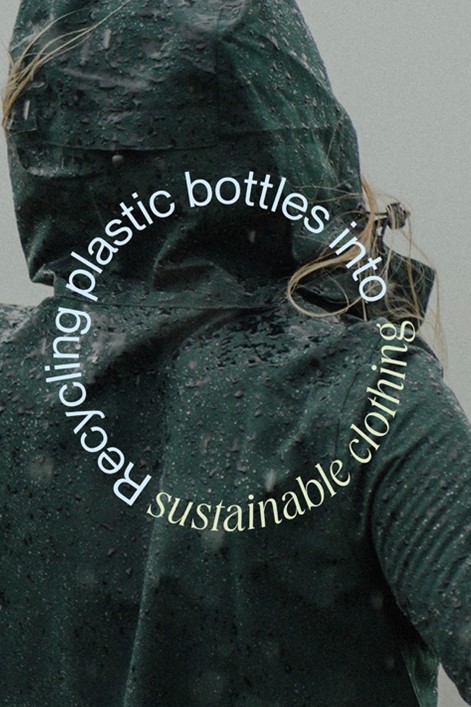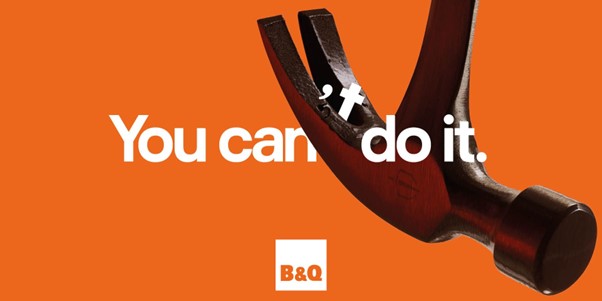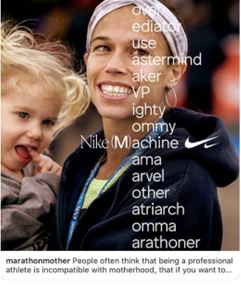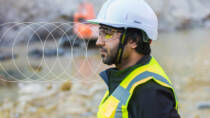Raising the profile of HR: strategies for shaping perception and impact
By Sally Pritchett
CEO
HR has never been more essential. But how can you elevate the profile of HR to drive transformative change, foster a thriving organisational culture and begin to change the professional stereotype?
With global uncertainty – conflicts, climate change, and economic struggles – employees are navigating tough times. They’re also increasingly seeking a stronger sense of belonging and purpose in their work. On top of this, challenges such as multi-generational workforces, a healthcare system under extreme pressure, and a growing burnout and mental health crisis are compounding the difficulties for HR. And ever present are the rapid technological changes and heightened concerns about AI and automation. These all combine to make HR’s role more vital – and complex – than ever.
Never more has HR needed to be positioned as a strategic partner, contributing valuable insights to decision-making.
Examining the reputation of HR
On the 19th April, we were delighted to host a virtual discussion for HR leaders focusing on raising the HR profile both externally and internally. Our CEO and Co-Founder, Sally Pritchett was joined by expert in HR PR, Kay Phelps, and together they discussed the impact of the negative media narrative on HR.
Kay shared a range of recent headlines from ‘What’s the point of HR?’ (FT Podcast) and ‘How the HR monster destroyed the workplace’ (Telegraph) to the rather depressing ‘Why everyone (still) hates HR’ (TLNT) and ‘HR viewed as least productive department by employees’. (HR Magazine).
Kay and Sally reflected on the adage ‘sticks and stones can break my bones but words can never hurt me’ suggesting that in this case, it appears that words are hurting the professional reputation of the HR function with 83% of HR professionals believing that HR is suffering from a tarnished reputation (Cezanne/HR Ninja research) and 54% of HR professionals feeling they rarely or never receive recognition for their efforts.
But there’s evidence that the damage is far worse than purely this tarnished reputation within organisations with poor and ever-diminishing investment in HR clearly out of balance with other functions.
Average HR function spend (as a percentage of revenue) stands at just 0.76% in comparison to other better-funded functions like Finance achieving 1.30%, IT at 3.25% and even marketing (a previously also function challenged by its reputation as a colouring in the department) now achieving a whopping 7.5%. (Gartner research)
Worst still, this underfunding is potentially set to worsen as 25% of 2023 HR budgets decreased year on year, (adding to a decrease of 12% in the previous year). (Fortune)
Strategies for shaping perception and impact
HR’s role in the business is expanding rapidly, encompassing critical areas such as workplace culture, diversity, equity, and inclusion (DEI), employee well-being, and talent acquisition. This includes fostering a sense of inclusion, belonging, and psychological safety, as well as aligning the workforce with the organization’s purpose and creating fulfilling roles. HR is also tasked with navigating the complexities of hybrid working arrangements, engaging a diverse workforce, and ensuring a seamless employee experience from start to finish. Furthermore, HR plays a pivotal role in talent retention amidst a competitive landscape, bridging generational gaps, supporting executive development, and preparing for the AI-enabled future of work. Amidst organizational transformations, HR juggles these responsibilities alongside redundancy programs, restructures, and job redesigns. The scope of HR’s remit is ever-expanding.
With HR being the least funded function and investment headed in the wrong direction whilst the remit and complexity of strategic HR’s role growing, Sally and Kay were keen to create a circuit breaker, seeking practical and tangible ways to help HR leaders move forward.
Sally reflected on a similar challenge a decade ago in her career, supporting a shift in the reputation of a marketing function including successfully increasing team size, budget and strategic profile within the business after three years of educating the wider business, shifting narrative from output (delivery) to impact (the difference made).
Kay and Sally shared their advice on building personal profiles, leveraging external media, engaging in the HR award landscape, educating their internal stakeholders and demonstrating their strategic contribution.
To find out more about their advice, watch the video below, or book a call to talk about your challenges with Sally here.
Championing workplace health, wellbeing and safety
By Sally Pritchett
CEO
In this article we share insights for internal communications leaders on a quest to move the dial on health, wellbeing and safety conversations.
The conversation on health and safety at work has been shifting for some time now. The emphasis used to be on safety, prioritising physical injury prevention, such as addressing slips, trips, falls, proper lifting techniques, and the importance of PPE, or adherence to safety protocols for tasks at heights. However, there has been a notable shift towards a more comprehensive perspective, encompassing not only physical safety but also considerations of health and wellbeing.
At Something Big our mission is to make a meaningful difference to workplaces, making them fairer, healthier and happier for all. In this article, we’re unraveling a little more on what we might mean by a ‘healthier’ workplace.
What is a healthy workplace?
We often refer to an organisation only being as healthy as its people, so it’s great to unravel what that might look like in the context of a world where according to the World Economic Forum we’re living longer but not necessarily healthier. Interestingly wealth has often also been seen as a measure of health, the thought that those with money could therefore afford better food, lifestyles and would automatically thus be healthier. We now know that wellbeing is not this linear.
If we narrow health down to the workplace we can see some clear buckets of health and wellbeing including:
-
Physical injuries (perhaps the heartland of HSE)
-
Cancer (an area of opportunity for employers to provider better support)
-
Cardiovascular disease (the largest global killer according to the WHO)
-
Respiratory conditions
-
Macular degeneration
-
Mental health issues (a topic of much greater awareness in the past few years)
When we consider these six themes it’s clear that much of our HSE effort in the workplace focuses in on a small part of the wider topics.
Of course, the nature of risk varies depending on the industry in which an organisation operates. Physically demanding industries may understandably prioritise injury prevention, while desk-oriented businesses are increasingly focused on mental wellbeing.
It may be useful to consider the nature of your workforce to spot who may need what support:
-
Outdoor workers who may have physically demanding roles
-
Indoor workers, desk-based workers, in particular those working from home may now have very sedentary or lonely roles
-
Workers in high-stress roles, like those with abusive customers or in traumatic situations
-
Vulnerable workers, like pregnant people, older adults, or employees with disabilities
-
Workers from challenging demographics, such as those facing language barriers or discrimination for example.
Looking at the workforce through this lens enables communications and support to be more tailored and as a result more effective.
Whichever sector an organisation operates in or whatever the makeup of their workforce, it’s critical that organisations drive the health, wellbeing and safety agenda. Here are top three tips for successfully leading the wellbeing conversation in the workplace:
1. Avoid the ‘one and done’ approach
Whilst celebrating awareness days like World Day for Safety & Health at Work are great, try to avoid big campaigns being the only time in the year to communicate with the workforce. We find creating sustainable and meaningful awareness and driving healthy cultures requires a rumble and roar approach. There needs to be year round, always on, communication supported by big campaign ‘roars’ a couple of times a year to be the most effective.
2. Make your messaging clear (and then repeat it often and consistently)
There is such truth in the quote “If I’d had more time, I would have written a shorter letter” but any communicator will know that creating simplicity and clarity of message are the hardest parts of their role. With multiple messages being crammed into every communication the role of Chief Editor is a critical one. The most effective communications are well-positioned, quick, to the point and clear on what the audience need to think, feel and/or do. The well-established single-minded proposition approach applies so well here and can create a disciplined approach to HSE messaging.
To ensure consistency of message, an audit of how an employee may be communicated to during their work is really useful here. From their recruitment process to inductions and onboarding, through to daily supervisor communications or annual refreshers, it’s important to ensure that the same message is being delivered.
3. Avoid empty communications
‘Empty communications’ is a phrase we refer to a lot, alludes to the words not backed up by actions. In the case of HSE, ’empty communications’ would be walls plastered with ‘Safety First’ posters whilst only delivering a first aid kit, limited PPE and an acceptance of stressed, burning out employees. How do Internal comms professionals avoid this disconnect? By working closely with stakeholders to ensure that what their communications are expecting / asking of employees is realistic and practical.
Championing workplace safety – an inside look at a multi-award-winning communications program
In today’s complex landscape, workplace safety is more important than ever. In this concise session, you will discover the innovative strategies and practices that go into creating a multi-award winning health and safety program.
In this live showcase our Commercial Director, Felicity Allen and Creative Director, Sam Hennig, explored the global DHL Supply Chain ‘Our Safety is in Our Hands’ program. This program, winner of Best Frontline Campaign at the Simplys and Platinum at the MUSE Creative Awards, is currently a finalist for the 2024 Safety and Health Excellence Awards in the Best Campaign category.
If you’re looking for a health and safety campaign that reaches the frontline, elevates safety standards within your organisation, protects your people and fosters a culture of wellbeing – let’s talk.
5 ways to engage employees with your sustainability communications
By Sally Pritchett
CEO
Improve employee engagement with your sustainability communications with these simple, but effective, strategies.
Living a more sustainable life requires us to change our behaviour, make ongoing commitments and sometimes make sacrifices – but despite all this, it’s not always easy to see the rewards of our hard work.
When we recycle or use the circular economy, the planet and the headlines don’t change. We’re still hearing that climate change is going in the wrong direction, despite the collective action we are all taking. And that’s why we’re starting to see more people experiencing sustainability fatigue.
What is sustainability fatigue?
Simply put, sustainability fatigue is a phrase that describes how people feel when, despite making choices that are better for the planet, they constantly see negative environmental news and start to think the changes they are making aren’t making a difference. So they start to make less effort or even give up altogether.
The challenges of sustainability fatigue
Sustained behaviour change is not easy
Humans are psychologically wired to value the things we already have more than those we don’t have. When it comes to encouraging people to embrace more sustainable lifestyles, asking them to let go of something they’re emotionally connected to is a challenge.
Making changes might not be cheap
Humans are facing a dilemma; they want to make changes that positively impact the environment but can’t always afford to do so. With 21% of people saying it is too expensive to make changes, this could be stopping people from living their lives as sustainably as they would like to.
The extent of change required is overwhelming
As people ocellate between taking proactive action and feeling overwhelmed by the lack of progress, it’s no surprise that climate anxiety is rising – more than 80% of British adults say they have some level of concern about climate change. These feelings of concern are as real as climate change itself, so it’s no wonder people aren’t sure where to start, what to believe or where to focus their action.
Whilst people may be facing these challenges in their personal lives, sustainability has scaled the corporate agenda. And many businesses are doing more than ever to have a positive impact on the environment. But have you considered how your communications could provide support to your employees’ personal sustainability journeys?
Strategies for engaging employees with your sustainability communications
-
Change the tone
Remember, people know what’s going on, and many are already anxious. This is especially true for the younger generations who are starting to enter the workforce, with 31% of 16-24 year olds saying they are very worried about climate change. It’s time to try ditching the doom and gloom and lightening up communications, balancing important information with a little fun to raise awareness.
Strategy: Try interviewing your subject matter experts with quick-fire questions or turning educational communications into a quiz-style interview. Giving a voice to real people around your business can help make changes feel achievable and realistic – people need to hear the authentic truth about how colleagues who are similar to them have managed to change their behaviour.
-
Get (and keep) talking
It’s more important than ever to keep the conversation going. Communication can reduce anxiety by reassuring employees that your organisation is taking sustainability seriously. Keep employees consistently in the loop with the progress you’re making and bring to life all the achievements (and failures) big and small.
Strategy: Consider whether you could help your Head of Sustainability or key subject matter experts to publish a diary, vlog or blog to continually share their updates.
-
Get competitive
As humans, we all fall for a bit of gamification, in and out of the workplace. With 82% of employees say that game elements help provide a greater sense of meaning and purpose in their workplace, gamification can be about more than just a bit of fun.
Strategy: How about challenging different offices, locations or departments to see who can collect the most recycling, reduce their digital storage by the most or carry out the most volunteering?
-
Empower your employees
Enabling action is a great way to reduce anxiety and get change happening. How you empower your employees will depend on the kind of organisation you are, but remember your front-line workers might have the answers to make big changes.
Strategy: Try brainstorming ways your employees can practice more sustainable activities at work, from switching off lights to having a digital declutter, give them tangible things they can take action on and possibly implement at home too.
-
Start a movement
Building a growing community of employee advocates and champions is a great way to build up momentum. With 66% of employees rating employee resource groups as an effective way to foster a sense of community, this can provide an opportunity for employees to bond and engage, as well as taking the benefit of taking positive action.
Strategy: Sustainability employee resource groups or Green Teams are a great source of new ideas, from how to reduce waste to setting up recycling hubs, and internal employee swap shops to creating an onsite vegetable roof garden.
If you’re in search of ESG communication experts to engage employees with sustainability communications, then look no further – you’ve found us! We would be delighted to hear from you to explore the possibility of partnering together.
Exploring fresh graphic design in creative communications
By Sally Pritchett
CEO
Explore the freshest trends in graphic design and find inspiration to create communications that connect with your audience.
As spring is blooming all around us, there’s no better time to infuse your creative communications with the spirit of renewal and growth. In this article we’re sharing what’s been inspiring us lately and examining some of the design trends we’re excited to see.
Sustainability and purpose-driven branding
Sustainable design is not a trendy, niche approach, it’s fast becoming a core principle. Consumers are looking for brands that align with their values and have a clear social or environmental mission. Brands that can effectively communicate their purpose and demonstrate their commitment to making a positive impact are likely to resonate. Customers are placing more value on products and services that prioritise sustainability, with studies finding that 81% of consumers believe brands should actively work to protect the environment.
From a design style perspective, we’re seeing a lot more thought go into packaging. Not just classic recyclable material and eco postage, but packaging being reusable or rethinking it by giving it a second life.
Sustainability conscious styling is starting to shift away from cliche ‘green’ to using a wider palette of nature through muted blues, beige and pinks to represent sustainability alongside the classic textured, earthy feel.
 Amble Outdoors | Sustainable clothing
Amble Outdoors | Sustainable clothing
As well as seeing these visual changes, the messaging is diving deeper. As a more well-informed audience which has growing concern over climate change and other environmental issues, consumers are increasingly looking for brands that prioritise sustainability. Messages and campaigns are bold and calling people out when they’re greenwashing or contributing to negative sustainable practices, working towards a force for change.
Make My Money Matter | Oblivia Coal Mine
The continued rise of AI
AI has made a huge impact on the marketing world over the last year. While the creative industry may feel under pressure from generative AI tools, it has also never felt so full of potential and scope for growth. AI is streamlining the design process, providing insights and generating multiple styles quickly. And AI is not going anywhere! AI is only going to get bigger and better, especially as us as humans learn to control it and manipulate it.
In this recent survey by It’s Nice That, 83% of creatives in the industry are already using AI tools. There are still ethical concerns around bias – which still need a human eye to carefully consider outputs – and legal concerns around plagiarism but the technology will undoubtedly continue to improve.
 Midjourney outputs
Midjourney outputs
Embracing nostalgia
Fashion repeats itself every twenty years or so, and this holds true in design too. The content of nostalgia marketing changes with the generations, as each generation has different cultural references. Gen Z may look to cultural references from the ’90s or early ‘00s, whereas Gen X or older millennials might feel nostalgic about the ’80s and its cultural touchpoints.
We have seen a huge re-emergence of ’90s inspired designs stemming from the iconic Barbie and Mean Girls movies allowing many of us to embrace the childhood nostalgia. This is paving the way for vibrant colours, abstract shapes, funky patterns, and scrapbooking to name a few. These design styles create an emotional bond with the audience, this especially aligns with Gen Z’s growing digital fatigue and their desire for meaningful experiences and authenticity.
Cadburys | Yours for 200 years
Bold type
Sometimes text needs to do the talking. In a world where there is so much visual information thrown at us and video/social media can be so intrusive, a simple message is effective. More campaigns are using simple type to tell the message and make an impact. Simplicity is key. Clean imagery is being used but enhanced by the typography.
 B&Q | You can do it
B&Q | You can do it
Inclusive design
Inclusive design that is both diverse and accessible has rightly become a staple. Ranging from high-contrast graphics, clear typography, alt text for images, and diverse and inclusive messaging.
Inclusive design enables us to talk to global audiences, breaking down barriers and challenging stereotypes.
 Nike | This athlete isn’t just an athlete she’s a mother too.
Nike | This athlete isn’t just an athlete she’s a mother too.
Impactful communications that connect with people
It’s clear that the world of graphic design is always changing and we’re seeing exciting trends shaping the way we communicate.
But amidst all this change, one thing stays the same: our commitment to making impactful designs that connect with people. Whether it’s telling your brand’s story or spreading a message, we’re here to help. If you’re looking to get cut through with your creative communications, reach out to us. Let’s work together to make something that makes a lasting impression.




